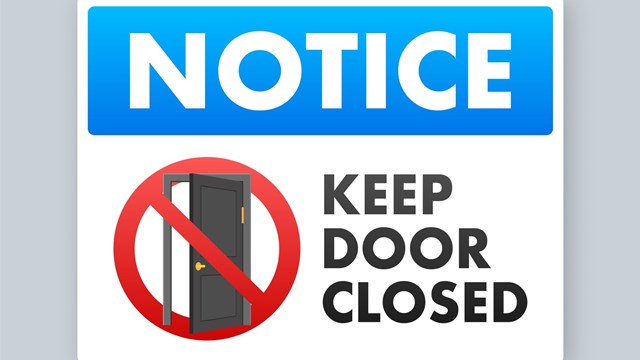The transformation of New York City from one of the nation’s perceived most dangerous places to one of the safest, if not the safest, big cities in America is an old story by now, but it still continues to amaze both longtime New Yorkers and visitors alike. It seems like only yesterday that the crack epidemic was in full swing, the subway was considered unsafe at night, muggings and apartment break-ins were commonplace, drug dealing went on openly in city parks, entire blocks were boarded up or burned down, and every subway car was defaced by graffiti.
Sometimes, gang members would even discuss their “business”—who they planned to beat up, their drug deals, and their guns—with each other on subways or buses, as frightened riders tried as they could to ignore them. Of course, the 1979 movie The Warriors was an exaggeration, but there was some truth to it. Today, that’s not the case—what has changed here, and why?
Crunching Crime Numbers
While people may disagree on the causes, statistics tell the story. According to the New York City Police Department’s (NYPD) online statistics (http: //www.nyc.gov/html/nypd/html/pct/cspdf.html), on a citywide basis, murder has gone down 16 percent from 2001 to 2005, 54 percent from 1995 to 2005, and a whopping 76 percent from 1990 to 2005—from 2,262 homicides to 540.
Rapes, too, have gone down, from 3,126 in 1990 to 3,018 in 1995 to 1,930 in 2001, to 1,635 in 2005. As for robberies, they’ve decreased from 100,280 to 59,733 to 27,873 to 24,442.
Aha, you might say, but what about some of the city’s more dangerous areas? Well, let’s take a look at the 44th Precinct in the Southwest Bronx, the famed “Fort Apache” of yesteryear. Even there, murders steadily decreased from 89 in 1990 to 44 in 1995 to 31 in 2001 to 16 in 2005, for a total of an 82 percent decrease since 1990.
And the 75th Precinct in Brooklyn’s East New York area underwent a similar transformation. Murders here went from 109 in 1990 to 44 in 1995 to 35 in 2001 to 29 in 2005, decreasing by a total of 73.3 percent since 1990.
Indeed, the FBI’s Uniform Crime Report for 2005, the latest full year for which statistics are available, released this past September, once again deemed New York City “the safest big city in America.” The FBI report shows that the city experienced a 4.3 percent drop in overall crime in the past year, even though violent crime increased nationwide by 2.3 percent.
“Today’s final 2005 report by the FBI shows that our innovative efforts to reduce crime and increase New Yorkers’ quality of life are working,” Mayor Michael R. Bloomberg commented in an official statement. The part of the mayor’s own management report dealing with police operations (viewable atwww.nyc.gov/html/ops/downloads/pdf/_mmr/nypd.pdf) adds even more statistics: subway crime of all types decreased 20 percent from 2005 to 2006, and crime in public schools went down 10 percent during the same period.
What does this mean, however, to the average city resident—especially the average co-op or condo resident? Can he or she relax a little, or do people still have to keep their guard up?
Why the Drop?
To what do professionals attribute this drop in crime? We asked several people—representatives of community patrols, community boards and neighborhood groups in several city neighborhoods—for their theories and perceptions.
Most of those who commented credited better law enforcement. Ted General, a community leader and 30-year member of the 68th Precinct Community Council in Bay Ridge, Brooklyn pointed to the NYPD’s “Compstat” system, in which the precinct commanders have to report to One Police Plaza once a month, and have to account for any rises in crime.
Leslie Lewis, criminal justice coordinator for the Brooklyn Borough President’s Office, praised the police department’s emphasis—beginning in the Giuliani era—on “quality-of-life arrests.” The rationale behind this policy of arresting lawbreakers for such seemingly minor violations as writing graffiti, drinking beer out of a can without a paper bag, or turnstile jumping is that many of the people guilty of these offenses are also guilty of more serious crimes.
“When guys used to jump over turnstiles,” says Lewis, “they had a gun in their back pocket. Now they leave the gun at home because there are gun courts, and if you’re caught with a gun, it’s almost 90 percent guaranteed that you’ll serve time. I used to hear gunshots every night in the Gowanus Projects [in Brooklyn]—you don’t hear that anymore.”
One person who dissents from this point of view is Roy Sloane, first vice president of the Cobble Hill Association in Brooklyn. Instead, he points to demographics. “To have a real surge in crime,” he says, “you really have to have a bulge in the population of young men 18 to 24. That’s what made the gangs of the 1950s possible.”
Today, Sloane says, you don’t have that “critical mass.” Indeed, he believes that nowadays, “the majority of people who are incarcerated are suffering from either mental illness or substance abuse.”
Where Is Crime Down?
As we’ve indicated before, crime is down not only in such recently-gentrified areas as “Hudson Heights” (western Washington Heights), Long Island City, Alphabet City and Red Hook, but all over the city.
For example, Robert Benfattu, district manager of Manhattan Community Board 4 in Chelsea-Clinton, says that his district is split between four precincts—and crime is down everywhere.
Frank Kotnik, president of the Glendale (Queens) Civilian Observation Patrol, says, “I’ve been doing this for 18 years, and I’ve seen a dramatic decrease. People are moving back into New York City, people are moving back into Queens, back into Brooklyn. Abandoned buildings are being turned into housing units now. They’re buying every little postage-stamp-sized property [for development].”
“I go to community council meetings in all the neighborhoods, and they’re not as angry as they used to be. They’re nicer to cops,” he says, although he acknowledges that “there are still rougher precincts,” says Lewis, of the Brooklyn borough president’s office.
What do people in formerly rough neighborhoods like the East Village and Hell’s Kitchen feel about the upturn in their neighborhoods during the past 10 or 15 years?
“I think there’s a mix,” says Benfattu. “People like the fact that in Hell’s Kitchen, crime has gone down and it has become a `hot spot.’ But they’re also concerned about overdevelopment and oversaturation [of housing].”
Influence of 9/11
Of course, although terrorism is a separate issue from crime and overall safety, the increased security that we’ve seen since 9/11 has had an impact on street crime as well. For example, if cops can randomly search bags and briefcases on the subways, it doesn’t pay for the criminals to bring their guns or knives anymore. The increased security in office buildings, where everyone must sign in and present a photo ID, is also a by-product of 9/11.
As far as condos and co-ops are concerned, Heidi Chain, president of the 112th Precinct in Queens’ Forest Hills and Rego Park, says, “Since 9/11, we have the whole emergency preparedness thing in apartment buildings.”
“We’ve done an apartment building survey [of our precinct]” she says. “We have lists of managers in the buildings, so there’s an emergency, we know who the managers are, who the management companies are. If there’s just a super, we have that super’s phone number. If anyone comes to our precinct council meetings who lives in an apartment building, whether it be co-op, condo or rental, we ask them to give us information. We also encourage the building management [to let us know] of anyone who might have a problem in an emergency, like a disabled person.”
No More Armed Camp
As the city has gotten safer, there are certain signs of fear that one just doesn’t see as much anymore—especially in residential buildings. Forbidding features as razor wire on rooftops, giant gates in front of ground-floor courtyards, and solid roll-down gates on retail stores are somewhat less in evidence in many neighborhoods.
It isn’t that people don’t feel the need for security anymore, however. It’s that newer, more modern types of security management may be more apropos— and more attractive. Most observers, for example, believe that the need for razor wire, or concertina wire, is less now that closed circuit TV (CCTV) is affordable and feasible in many, if not most, co-ops and condos.
“When we have that type of stuff, like concertina wire, it makes a neighborhood look like an armed camp,” says General of Bay Ridge. “Aesthetically, it doesn’t look good. Since the cost of closed circuit TV has dropped down dramatically, I don’t think it’s necessary.”
Referencing the crime statistics, Kotnik of Glendale believes that the type of crime that once mandated drastic measures such as razor wire is less prevalent. “You had razor wire because in the 1980s, you had the crack epidemic. People would sell their own mothers to get their vial of crack. Since we’ve got more law enforcement, we don’t have that element.”
As for gates on retail stores—which many co-op buildings have on their ground floors—Lewis says, “You do see pull-down gates now, but they’re see-through gates, which actually offer better security.” Not only were the old-style, solid pull-down gates ugly, he says, they also invited petty crime, in the form of graffiti.
Whatever the reason, the city both looks better and is safer nowadays than it was in the 1980s or early 1990s, and co-op and condo residents are among the main beneficiaries. After all, the perception that New York is a safer city is one of the main reasons that developers keep erecting more and more new condos, and why those who choose to sell their units are reaping record-breaking profits. In many ways, it would seem that safety not only equals peace-of-mind, but also equals value.
Raanan Geberer is a freelance writer living in New York City.







Leave a Comment